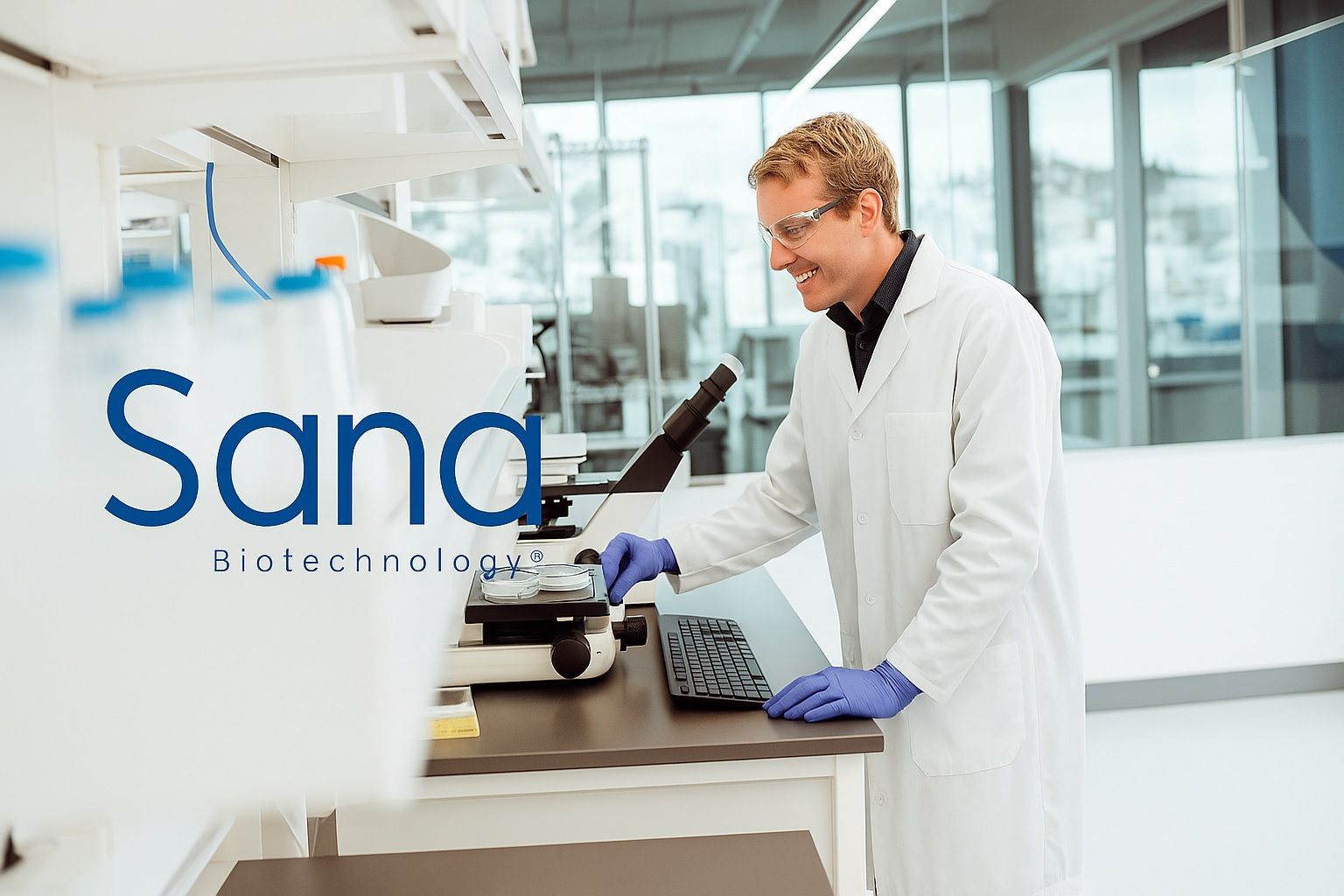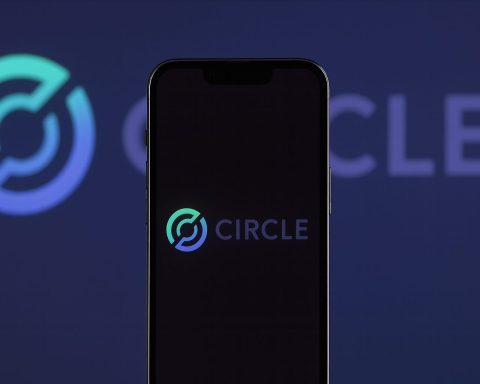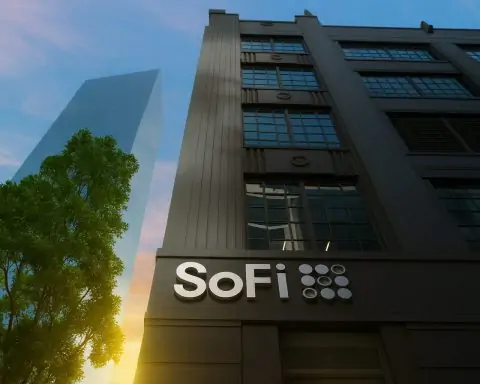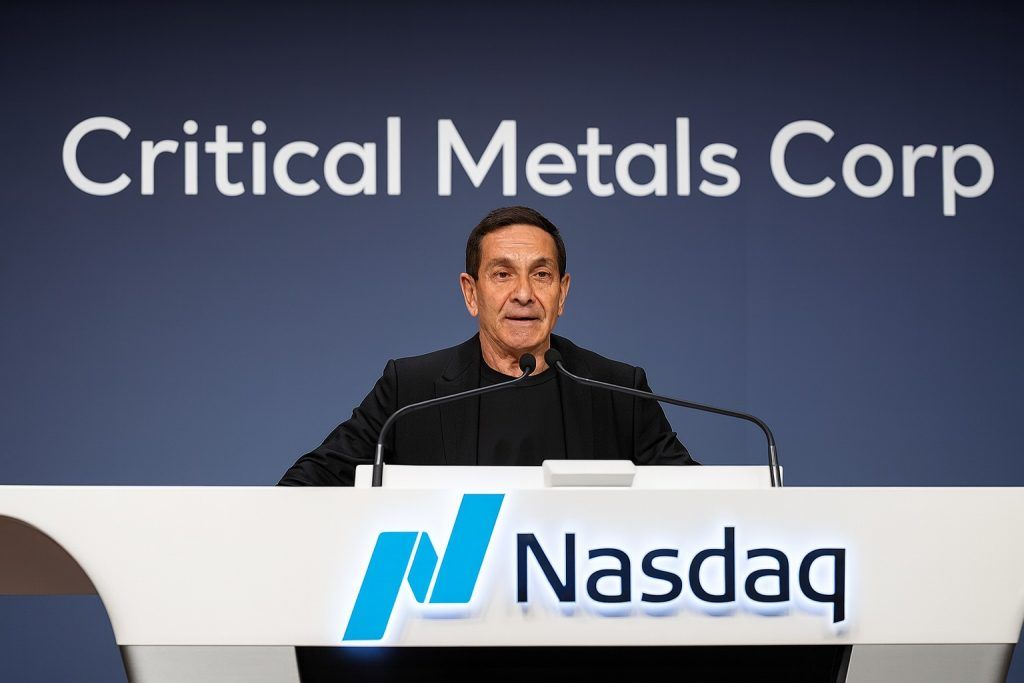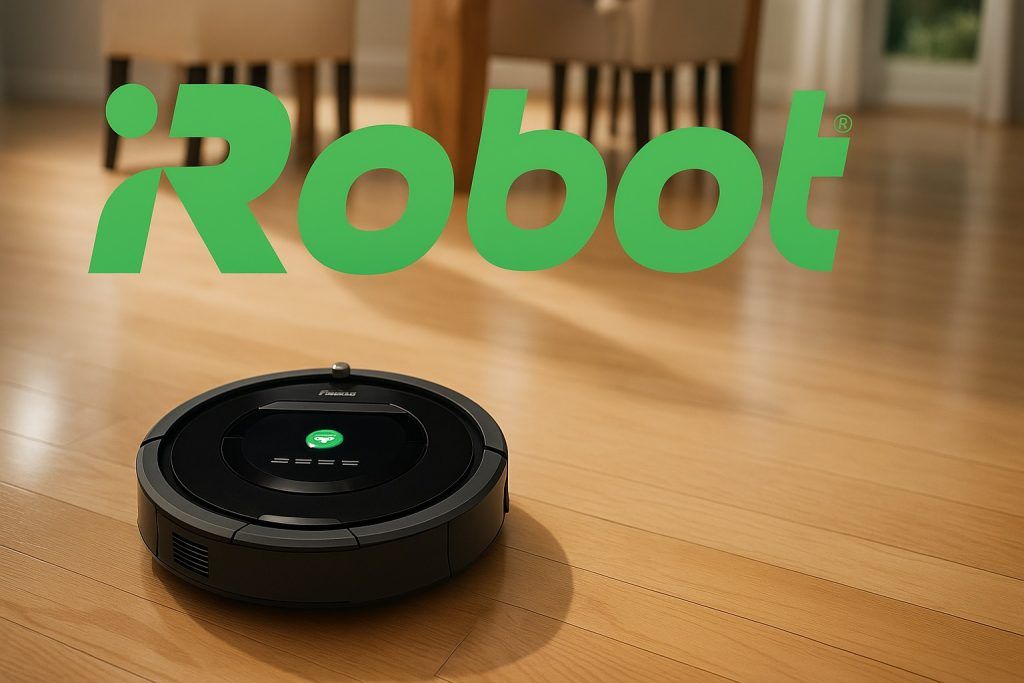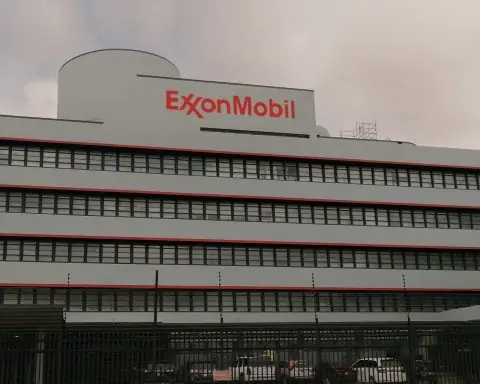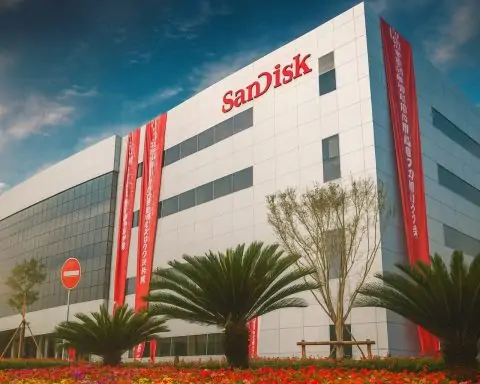- SANA stock spiked ~26% on Oct. 15, leaping from a $4.45 close to $5.62, briefly topping $6 intraday [1]. As of Oct. 16, shares hovered around the $6 mark amid continued momentum [2] [3].
- Viral “100-Bagger” call: Hedge fund manager Eric Jackson fueled the rally by dubbing Sana “the next 100-bagger,” citing a renewed risk-on appetite in biotech as interest rates fall [4]. His endorsement on X (Twitter) sent SANA shares surging, even triggering volatility trading halts.
- Pipeline progress: Sana reported encouraging early results in its quest for a Type 1 diabetes cure – a 6-month study showed transplanted pancreatic cells produced insulin without need for immunosuppressive drugs [5]. The company aims to file an IND (FDA application) for its stem-cell derived islet therapy (SC451) by 2026 [6]. Meanwhile, two CAR-T cell therapy trials (for an autoimmune disease and for B-cell lymphoma) are underway with initial data expected in 2025 [7], and an in-vivo CAR-T platform is in preclinical development targeting 2026.
- Financial runway: To fund its R&D, Sana raised ~$105 million via stock offerings in July–August 2025, extending its cash runway into late 2026 [8]. Pro-forma cash was about $177 million mid-2025 (up from $72.7 M prior), giving the pre-revenue company a cushion for now [9]. However, it continues to operate at a loss (net loss of $93.8 M in Q2 2025) as it invests heavily in clinical programs [10].
- Analyst views split: Wall Street’s outlook is mixed. H.C. Wainwright reiterated a Buy rating with an $11 target, and Morgan Stanley began coverage Overweight with a $12 target [11]. But others urge caution – Wedbush and JMP started at Outperform but with only $5 price targets [12], and Weiss Ratings recently reaffirmed a Sell on Sana [13]. The consensus stands at “Moderate Buy” with an average 1-year price target around $7.50 [14].
- Biotech boom & competition: Sana’s surge comes amid a broader biotech rebound as investors rotate back into growth stocks on hopes of Fed rate cuts and cooling inflation [15]. The company is racing in a competitive field – for example, Vertex Pharmaceuticals has reported that 10 of 12 patients in a trial of its islet cell therapy were insulin-independent after one year (albeit with immunosuppressive drugs) [16]. Sana’s proprietary hypoimmune cell technology aims to eliminate those immune-suppressing meds [17], a potentially game-changing edge if it succeeds.
Surge Fueled by a ‘100-Bagger’ Tweet
Sana Biotechnology’s stock skyrocketed mid-week after a bold endorsement from a well-known tech investor. On Oct. 15, SANA shares jumped over 25% in a single session, closing at $5.62 (up from $4.45 the day prior) [18]. In intraday trading the stock even hit roughly $6.55 before paring back gains [19]. The catalyst? A viral post on social media. Hedge fund manager Eric Jackson — known for spotting high-growth plays — proclaimed on X (formerly Twitter) that “Biotech is back… $SANA looks like the next 100-bagger platform”. He pointed to an improving macro backdrop (lower inflation and hints of interest-rate cuts) spurring a rotation “from megacaps to growth” stocks [20] [21]. Jackson’s ultra-bullish tweet injected a burst of momentum into Sana, with Benzinga reporting that the stock soared early Wednesday after his call went public [22]. In fact, trading activity was so frenzied that exchanges halted SANA multiple times for volatility cooling-off periods.
This isn’t the first time a social-media shoutout has sent a small biotech flying, but the magnitude (+26% by close, and at one point +47% intraday) turned heads [23]. It underscores how investor sentiment can dramatically swing early-stage biotech stocks. Short-term traders piled in on the 100-bagger hype, while forums and chat rooms lit up with debate on whether Sana could truly multiply 100-fold. Company insiders, however, emphasize that fundamentals will determine the outcome. As one industry commentator noted, Jackson’s hype “sparked excitement” but “the company’s long-term story will be written by its science [and] execution” [24].
Bright Spots in Diabetes and Cell Therapy Pipeline
Behind the trading frenzy, Sana Biotechnology’s actual business centers on cutting-edge cell engineering – and recent scientific news has been positive. The Seattle-based biotech is developing treatments that replace or reprogram human cells to cure serious diseases. Its flagship program targets Type 1 diabetes (T1D), an autoimmune disease where the pancreas loses insulin-producing cells. Sana’s approach: create replacement pancreatic islet cells (the cells that make insulin) from stem cells, cloak them from the immune system via gene editing, and transplant them into patients without requiring anti-rejection drugs. It’s an ambitious bid for a functional cure of diabetes.
Encouragingly, early data hints it might work. In a closely watched study, a single T1D patient received Sana’s experimental cell therapy (code-named UP421). Six months post-transplant, the lab-grown islet cells were surviving and producing insulin with no immunosuppressive therapy on board [25]. These results, presented at a conference and published in NEJM, showed sustained insulin production (measured by C-peptide levels) and no immune attack on the cells [26] [27]. “Type 1 diabetes affects over 9 million people worldwide, and we are positioned to deliver on our goal of a broadly accessible one-time treatment with no immunosuppression,” CEO Steve Harr said, underscoring the potential impact [28]. Sana is now prepping its follow-up product – a refined stem-cell derived islet therapy called SC451 – for an FDA IND filing as early as 2026 [29]. If regulators greenlight human trials, SC451 could enter clinical testing to evaluate its safety and efficacy in T1D.
Beyond diabetes, Sana has a broader pipeline tapping its cell-engineering platforms. Notably, the company is running two Phase 1 trials of CAR-T cell therapies for diseases driven by rogue B cells (a type of immune cell). One trial, dubbed GLEAM, is testing a CAR-T for autoimmune disorders (aiming to eliminate the B cells causing diseases like lupus). The other, VIVID, targets B-cell cancers (such as certain lymphomas) [30]. Both studies are actively enrolling patients [31]. Sana expects to report initial human data from these trials in 2025, which could be major stock catalysts if results impress [32]. Additionally, Sana is exploring a next-generation in vivo CAR-T platform (project SG299). Instead of manufacturing CAR-T cells in a lab, in vivo CAR-Ts would be delivered as gene therapy to reprogram cells inside the patient. Sana’s in vivo CAR-T is still preclinical, with an IND target around 2026 [33]. Success there could open the door to treating cancers with a simple injection rather than complex cell manufacturing.
Competitive race: It’s worth noting Sana isn’t alone in chasing a diabetes cure. Pharma giant Vertex is also developing an islet cell therapy for T1D. In fact, Vertex recently announced that in an ongoing Phase 1/2 trial, 10 out of 12 treated patients were able to stop taking insulin for a year after receiving its stem-cell islet infusion [34]. That breakthrough – hailed as potentially “transformative” – comes with a big caveat: those patients must remain on lifelong immunosuppressant drugs to protect the donor-derived cells [35] [36]. Vertex is working on a next-gen version that uses gene editing to create hypoimmune (immune-invisible) cells, much like Sana’s strategy [37] [38]. “The race is on for an insulin-producing treatment that doesn’t require immune suppressing drugs,” observed PharmaVoice, highlighting that multiple companies (including Sana and Vertex) are striving for this same goal [39] [40]. If Sana’s approach succeeds, it could leapfrog competitors by delivering a T1D therapy that frees patients from both insulin shots and anti-rejection meds – a true paradigm shift in diabetes care.
Financial Check-Up: Cash Burn vs. Cash Buffer
Like most clinical-stage biotechs, Sana is burning cash as it pushes its pipeline through research and trials. The company has no products on the market yet, so it relies on investor funding to fuel operations. In the second quarter of 2025, Sana reported a net loss of $93.8 million, a widening deficit driven by heavy R&D and administrative expenses [41]. Ensuring sufficient cash to reach key milestones is therefore critical. Fortunately, Sana shored up its balance sheet in recent months. Over the summer, it raised approximately $105 million in fresh capital via a public stock offering and “at-the-market” (ATM) share sales [42]. This fundraising effectively boosted Sana’s cash reserves to roughly $177 million (pro forma as of mid-year 2025) [43].
Company guidance indicates that, with about ~$177 M on hand, Sana has enough runway to fund operations into the second half of 2026 [44]. “The new capital strengthens our balance sheet and allows us to continue investing in our pipeline,” CEO Harr noted in August [45]. In other words, investors likely won’t face immediate dilution from another offering, at least for a year or more. That said, unless Sana secures a partnership or other revenue source, it will need to either raise more money or achieve significant progress by 2026 to attract new funding. The cash burn remains a key concern on the bearish side: even as bullish traders talk about 100x returns, skeptics point out that without an approved product, Sana will keep spending cash and could eventually be forced to dilute shareholders again if trial timelines extend.
Wall Street’s Take: Bulls vs. Bears
Is Sana Biotechnology the next big biotech winner or just another overhyped story? Analysts are somewhat divided. On one hand, several Wall Street firms see considerable upside in the stock. H.C. Wainwright, for example, reaffirmed a Buy rating, citing Sana’s platform potential in diabetes and oncology, and set a price target of $11 [46]. Morgan Stanley also jumped in optimistically – the bank initiated coverage on SANA with an Overweight rating and a $12 target in July [47]. These bullish analysts argue that Sana’s innovative science could justify a much higher valuation if clinical results continue to impress. Indeed, one analysis projected that peak annual sales for Sana’s diabetes therapy could reach nearly $2 billion (risk-adjusted) – or up to ~$9 billion in a best-case scenario – given the enormous T1D market [48]. From that perspective, at around $6 per share (≈$1.3 B market cap [49]), SANA might be significantly undervalued relative to its long-term opportunity.
On the other hand, bearish voices urge caution. Earlier this month, the independent Weiss Ratings service reiterated its “Sell” rating on Sana [50], flagging the company’s lack of revenue and the long road still ahead for its experimental therapies. Similarly, while Wedbush and JMP Securities have positive Outperform ratings on SANA, both set ultra-conservative $5 price targets – basically suggesting the stock is fully valued around current levels [51]. Such low targets reflect skepticism about Sana’s timeline and chances: any setback in trials could send shares tumbling from these speculative highs. MarketBeat data shows seven analysts currently rate Sana a Buy and one rates it Sell, with a consensus 12-month target of roughly $7.50 [52]. That consensus implies a moderate upside from today’s price, not a guaranteed moonshot. It’s a stark contrast to the 100x hyperbole on social media. As Investing.com noted in a recent SWOT analysis, Sana’s fate hinges on successful trial outcomes – a binary risk that is common to all pre-revenue biotechs [53]. Without positive clinical data, the company has little fundamental value, a reality that prudent analysts never forget.
Biotech sector experts also point out that investor sentiment can swing wildly. This year, sentiment has started in Sana’s favor – the stock is up over 160% year-to-date [54] after a brutal slide in prior years – but it could reverse just as quickly. A contributor at TechStock² observed that price targets on SANA range from $5 on the low end to $15 on the high end [55]. That wide disparity mirrors the uncertainty: bulls see a platform that could change medicine (and thus justify far higher valuation), while bears focus on the execution risks and the possibility of dilution or failure. The key for investors, according to analysts, is upcoming data. Positive trial readouts in 2025 (for either the diabetes program or CAR-T therapies) could validate Sana’s technology and further ignite the stock. Conversely, any safety issues or underwhelming results would likely deflate the current optimism in a hurry.
Outlook: Cautious Optimism Amid Hype
Going forward, volatility is likely to remain the name of the game for SANA stock. In the short term, the dramatic rally sparked by an influencer’s tweet could be followed by bouts of profit-taking. Some traders who jumped in on the hype may cash out if there’s no immediate follow-up news. Indeed, after surging to ~$6, the stock could see a pullback as the initial frenzy cools. However, there are also near-term events that could rekindle bullish momentum. Notably, Sana is expected to report its third-quarter earnings and provide a business update in early November. While the financial results (likely another loss) won’t surprise anyone, management’s commentary on R&D progress will be closely watched. Any hints of accelerating timelines – say, moving the diabetes therapy into Phase 2, or early efficacy signals in CAR-T patients – could be catalysts. Furthermore, investor conferences and medical meetings in late 2025/early 2026 might offer platforms for Sana to unveil more data.
Crucially, the long-term thesis for Sana hinges on real clinical outcomes, not Twitter buzz. The good news is that 2025 and 2026 should be data-rich for the company. By this time next year, we should know whether Sana’s hypoimmune islet cells can replicate the kind of insulin-producing success Vertex has seen – but without immune suppression. We’ll also likely have initial human proof-of-concept from the GLEAM and VIVID CAR-T trials in autoimmune disease and cancer. Success in any one of these areas would be a game-changer for the company (and potentially for patients). Achieving a functional cure for even a subset of Type 1 diabetics, for example, could unlock a multi-billion-dollar market and put Sana on the map alongside pioneers like Vertex [56]. On the flip side, setbacks such as weak efficacy or safety red flags would underscore the risks of Sana’s approach and could send the stock into a tailspin.
For now, experts advise balancing the excitement with realism. “Sana’s latest rally highlights how influential investor sentiment can be in biotech,” writes Alex Corbit of Prism MarketView, “but the company’s long-term story will be written by its science, execution, and ability to navigate the path to commercialization.” [57] In other words, hype can ignite a stock like SANA, but it can’t carry it forever. The coming year will reveal whether Sana Biotechnology is on track to justify the buzz – or whether this speculative fever will give way to a hard dose of reality. Investors and analysts alike will be watching each development closely, making SANA one of the most intriguing (and unpredictable) tickers in the biotech sector as 2025 rolls into 2026.
Sources: TechStock² [58] [59] [60]; TechStock² [61] [62]; PharmaVoice [63] [64]; MarketBeat [65] [66]; Prism MarketView [67]; Benzinga [68]; etc. (multiple cited above).
References
1. ts2.tech, 2. ts2.tech, 3. www.benzinga.com, 4. ts2.tech, 5. ts2.tech, 6. ts2.tech, 7. ts2.tech, 8. ts2.tech, 9. ts2.tech, 10. ts2.tech, 11. ts2.tech, 12. ts2.tech, 13. ts2.tech, 14. ts2.tech, 15. ts2.tech, 16. www.pharmavoice.com, 17. www.pharmavoice.com, 18. ts2.tech, 19. ts2.tech, 20. www.benzinga.com, 21. www.benzinga.com, 22. ts2.tech, 23. www.marketbeat.com, 24. prismmarketview.com, 25. ts2.tech, 26. ts2.tech, 27. ts2.tech, 28. ts2.tech, 29. ts2.tech, 30. ts2.tech, 31. ts2.tech, 32. ts2.tech, 33. ts2.tech, 34. www.pharmavoice.com, 35. www.pharmavoice.com, 36. www.pharmavoice.com, 37. www.pharmavoice.com, 38. www.pharmavoice.com, 39. www.pharmavoice.com, 40. www.pharmavoice.com, 41. ts2.tech, 42. ts2.tech, 43. ts2.tech, 44. ts2.tech, 45. ts2.tech, 46. ts2.tech, 47. www.marketbeat.com, 48. ts2.tech, 49. www.marketbeat.com, 50. ts2.tech, 51. www.marketbeat.com, 52. www.marketbeat.com, 53. ts2.tech, 54. www.marketreportanalytics.com, 55. ts2.tech, 56. ts2.tech, 57. prismmarketview.com, 58. ts2.tech, 59. ts2.tech, 60. ts2.tech, 61. ts2.tech, 62. ts2.tech, 63. www.pharmavoice.com, 64. www.pharmavoice.com, 65. www.marketbeat.com, 66. www.marketbeat.com, 67. prismmarketview.com, 68. www.benzinga.com
